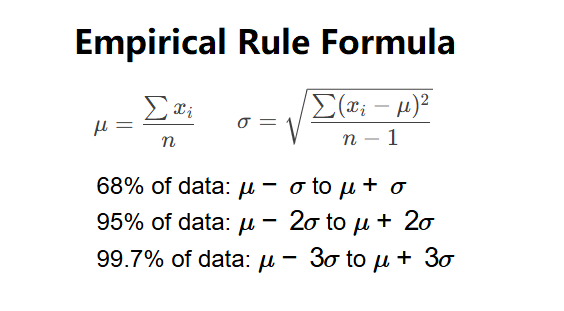 Home
Home
 Back
Back

Definition: The empirical rule, also known as the 68-95-99.7 rule, states that for a normal distribution, approximately 68% of data falls within one standard deviation of the mean, 95% within two standard deviations, and 99.7% within three standard deviations.
Purpose: Provides a quick way to understand the spread of normally distributed data without complex calculations.
The calculator uses the empirical rule to compute intervals based on the mean (\(\mu\)) and standard deviation (\(\sigma\)):
Steps:
Use when:
Example: For IQ scores with \(\mu = 100\), \(\sigma = 15\):
Q: Does the data need to be exactly normal?
A: The empirical rule is most accurate for normally distributed data but can be applied to approximately normal data.
Q: Can the standard deviation be negative?
A: No, standard deviation must be non-negative.
Q: Why use the empirical rule?
A: It provides a simple way to estimate data distribution without complex statistical calculations.
Q: What if my data isn’t normal?
A: The rule may not apply accurately; consider other methods like Chebyshev’s theorem for non-normal data.